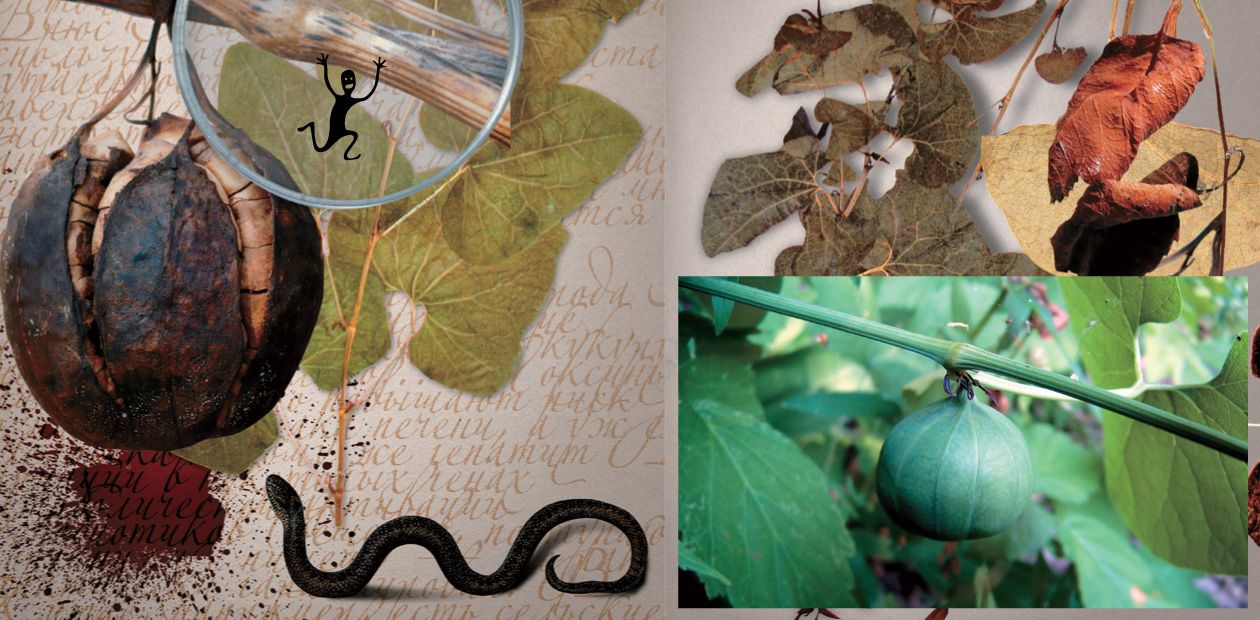A Toxicological Crime Story
The Case of Balkan Endemic Nephropathy
Are you not afraid to live in this world yet? In the world where any breath, any ingested piece may turn out to be deadly? Shockingly, plenty of things around us are quite noxious and, combined with a genetic predisposition, can cause gravest health implications. A compelling evidence for this statement is a thrilling and puzzling story, narrated by its direct participants, of the years-long search for a killer toxin causing most severe kidney failure in Serbian peasants and Belgian society women
Then Clever Elsie began to weep, and said, “If I get Hans,
and we have a child, and he grows big, and we send him into
the cellar here to draw beer, then the pick-axe will fall on his
head and kill him.”
Brothers Grimm, Clever Elsie
Do you know that just one cup of coffee contains about a thousand diverse chemical substances half of which are carcinogenic? This discovery was made by Bruce Ames, an American biochemist, who invented the universally used test for mutagenicity: according to him, a cup of coffee indeed contains about 500 diverse carcinogens; however, they are dangerous only at the doses several orders of magnitude higher than your regular cup.
Another example is aflatoxins, the toxins produced by the Aspergillus mold, which grows on many foodstuffs including peanut, corn, rice, olives, milk, and so on. These toxins greatly increase the risk of liver cancer, and if a person has hepatitis B and variations in some genes responsible for metabolic activation of xenobiotics (the substances passing into the body with food), cancer is almost unavoidable. For example, there are some areas in China that beat all world records in liver cancer morbidity. Why? First, the people living there eat a lot of peanuts stored in high-humidity conditions, ideal for mold growth; second, poor hygiene and sanitation result in raging hepatitis; and third, the gene variants responsible for more efficient transformation of aflatoxins into their mutagenic derivatives are widespread in the local population.
For us, there is no point in being afraid of aflatoxins – unless we munch moldy peanuts. However, what we should clearly understand is that the risk of developing many diseases, especially cancers, depends on the interaction between environmental and hereditary factors. The discovery of such factors with carcinogenic potential and prevention of their impact on the body is often not a trivial problem.
In these cases, the work of researchers resembles classic crime stories, with careful and meticulous gathering of information, shaping of the suspect pool, crime re-enactment in the laboratory, and eventual detection of the risk factor. Often, successful identification of the carcinogen or toxin and gathering proof of its involvement takes some time…
Episode 1. By the beautiful blue Danube
Blest he who sees pale Death await him
On Danube’s ever glorious shore;
The girls of Paradise shall greet him,
And sorrows ne’er afflict him more.
Alexander Pushkin, The Fountain of Bakhchisarai.
Yoto Tanchev, a Bulgarian provincial physician, was the first to write about a strange kind of chronic nephritis observed in the inhabitants of a small town, Vratsa, and its neighborhood. The publication appeared in a little-known Balkan journal, Savremena medicina (The Modern Medicine) in 1956. This nephritis cardinally differed from the commonly known disease: it affected only adults, developed slowly, and was accompanied neither by hypertension nor an increased protein in the urine. The major distinction from ordinary nephritis was that the patients had yellowing palms and soles (this diagnostic character was later referred to as Tanchev’s symptom). The disease affected the proximal renal tubules, which fatally caused renal fibrosis and eventually, renal failure. In addition, almost half the patients got cancer of the upper urogenital tract, which was rather unusual, since most cancers in the urogenital system involve its lower part: the bladder and urethra.
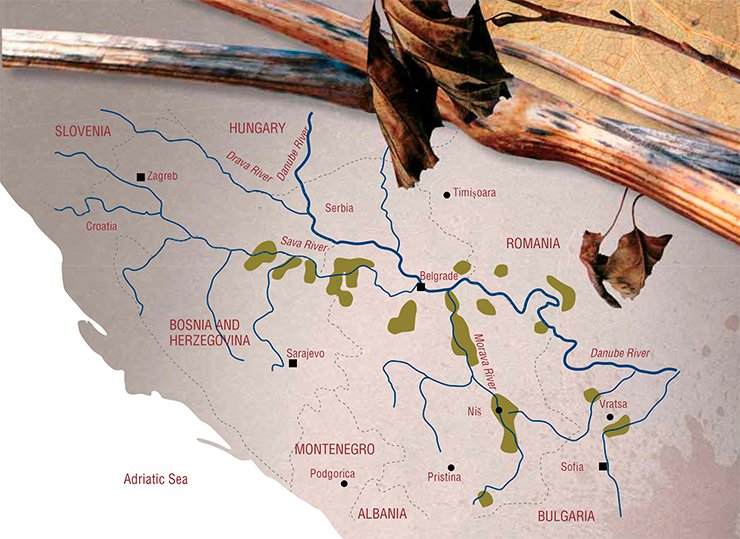 It emerged later that similar patients had been observed in Yugoslavia, Bulgaria, and Romania since the 1920s, though only in small towns on the Danube or its tributaries. Owing to this narrow distribution range, the disease got the name of Balkan (Danubian) endemic nephropathy.
It emerged later that similar patients had been observed in Yugoslavia, Bulgaria, and Romania since the 1920s, though only in small towns on the Danube or its tributaries. Owing to this narrow distribution range, the disease got the name of Balkan (Danubian) endemic nephropathy.
Since the very beginning, epidemiologists were astonished by a strange selectivity of this disease. It could appear in only one of two neighboring villages, and within the affected village involve several households, either adjacent or distant, without touching the rest of the inhabitants. All these observations did not agree with the hypothesis that the disease could be caused by environmental factors. Sometimes, the disease affected several members of the same family in only one generation; in other cases, it involved several generations, which ruled out the hereditary nature of the disease as well.
In the mid-20th century, the number of Balkan endemic nephropathy patients amounted, according to different estimates, to 0.5–4% of the total population in the involved areas, which was a very high morbidity. The patients usually died approximately a year after being diagnosed. However, the disease went into decline by the end of the century, although new cases are still being recorded near the Kolubara River (Serbia). The age boundary has also changed: the average age of the patients in the late 1950s was 45 years whereas now it is 69.
Balkan endemic nephropathy was a real challenge to scientists. Genetic factors were among the first suspects: may a certain mutation abundant among the local population be the cause of the disease? Indeed, a locus potentially marking the predisposition to nephropathy was discovered in the third chromosome. However, it was not that simple. The fact that some people developed Balkan nephropathy many years after they had moved from the endemic regions fitted well the hypothesis of a pathological mutation. On the other hand, some immigrants that came to the Danube banks from far away also became ill, which testified against genetic factors. Thus, it became clear that although genetic predisposition played an important part in the development of Balkan nephropathy, it was not the immediate cause.
In parallel with the genetic studies, a search started for a potential nephrotoxin. Analyses of water failed to detect heavy metals in the harmful quantities. Local water could contain polycyclic aromatic hydrocarbons (known nephrotoxins and carcinogens) washed off the coal mines in the neighborhood of the endemic settlements; however, these suspicions were not confirmed either. The possible involvement of viral or bacterial infections and shortage of micronutrients were also rejected on insufficient evidence.
Then, ochratoxin A, a metabolite of several molds frequently infecting dairy, cereal, and bakery products, attracted close attention. It was known that this toxin led to nephropathy and malignant tumors in pigs. Experimental studies in various laboratory animal models showed that this toxin was able to form covalent complexes (adducts) with DNA bases, thereby inducing mutations.
Episode 2. Death in the fitness club
And a toast in our restaurant is called a crouton. This is
the very same piece of roasted bread, but a toast cannot cost
eight dollars and a crouton can. Then you start to search
for at least some tint of taste distinguishing this crouton from
a toast. And you do find it!
“What are men talking about” (a movie)
The hypothesis that ochratoxin A caused Balkan nephropathy turned out very appealing, since occasions of the foodstuffs contamination with this toxin were recorded in some endemic areas in Bulgaria and Croatia. Moreover, the ochratoxin A adducts with DNA were detected in the kidney tumor biopsies of some Bulgarian patients.
It would seem that the culprit was found and Inspector Lestrade could issue an arrest warrant… if it was not for another crime case that happened in 1991 in Belgium. About 100 “high society” women who attended a sort of glamour hybrid of a fitness club and a holistic health center were hospitalized with kidney dysfunction after consuming some slimming herbal tea. The illness was so unusual that got the name of Chinese herbal nephropathy. It was accompanied by tubular fibrosis slowly passing into renal dysfunction. Eventually, all victims had renal transplantation and half the patients have by then developed upper urothelial cancer… Undoubtedly, an attentive reader has already grasped the connection between a Balkan village and the Belgian smart set.
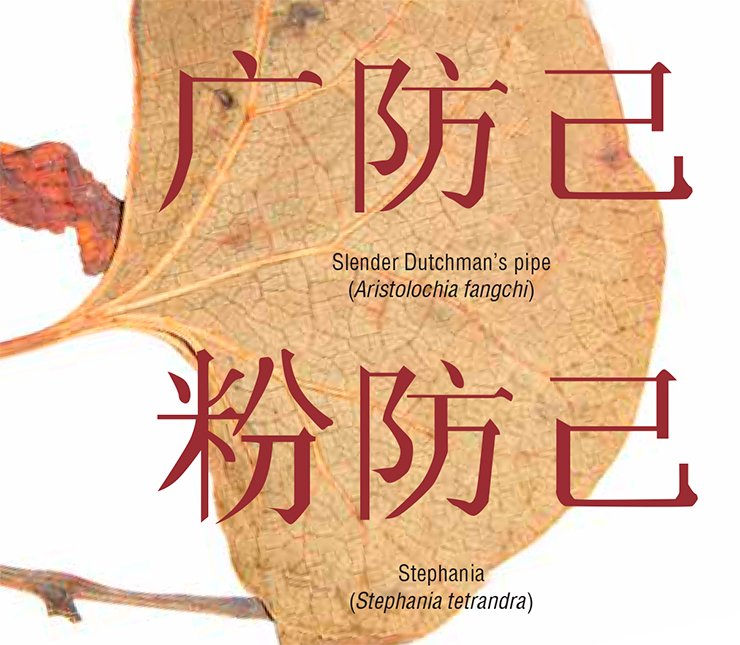 The investigation in this case involved both scientists and the police, and found out that instead of stephania (Stephania tetrandra), the Chinese herbal preparation for losing weight contained the extract of a different plant, the slender Dutchman’s pipe, or birthwort (Aristolochia fangchi). Amazingly, this fatal mistake resulted from the similarity in the hieroglyphs for the Chinese names of these plants. The presence of the slender Dutchman’s pipe in the slimming preparation was confirmed by phytochemical analysis, which detected the metabolic products of the latter plant, namely, aristolochic acids and their derivatives, aristolactams. Further examination of the affected kidney tissues detected the DNA–aristolochic acid adducts. However, no adducts between DNA and ochratoxin were detected in either patients or rats injected with the extract of “suspected” herbal mix.
The investigation in this case involved both scientists and the police, and found out that instead of stephania (Stephania tetrandra), the Chinese herbal preparation for losing weight contained the extract of a different plant, the slender Dutchman’s pipe, or birthwort (Aristolochia fangchi). Amazingly, this fatal mistake resulted from the similarity in the hieroglyphs for the Chinese names of these plants. The presence of the slender Dutchman’s pipe in the slimming preparation was confirmed by phytochemical analysis, which detected the metabolic products of the latter plant, namely, aristolochic acids and their derivatives, aristolactams. Further examination of the affected kidney tissues detected the DNA–aristolochic acid adducts. However, no adducts between DNA and ochratoxin were detected in either patients or rats injected with the extract of “suspected” herbal mix.
Since the earlier studies of aristolochic acids demonstrated their nephrotoxic and carcinogenic potential, Chinese herbal nephropathy was renamed aristolochic acid nephropathy, and toxicologists decided to examine the new suspect more closely. In fact, more new cases of nephropathies induced by Chinese herbs have been recorded worldwide—and is birthwort the only culprit?
Suspect’s record: a long career in medicine
To protect the hollow body organs, give the formula “Three tsig-
tkhuba” of the hare’s brain, bear’s bile, and sesame. To beat
the fire of bile, alternate “Three tsig-tkhuba” and the formula
containing saffron, bamboo manna, yellow poppy, chiretta,
birthwort, and amberrat, which should be supplemented,
depending on the temperature of the fire, with camphor, white
sandal, or bezoar.
rGyud-bZhi
“And Joseph! Joseph a villain and a thief!”
A. Conan Doyle, The Naval Treaty
Birthwort is present in the Chinese medicinal mixtures not without reason. The first mentions of this plant and its healing properties date back to Hippocrates. Different birthwort species (there are more than a hundred of them) have been used in folk medicine worldwide. The common birthwort (Aristolochia clematitis) grows in Europe; Indian birthwort (A. indica), in South Asia; the Virginia snakeroot (A. serpentaria), in North America; and bracteated birthwort (A. bracteolata), throughout the Old World tropics. The “worm killer” of Africans, mil hombres of Pathagonian gauchos – all are the same birthwort.
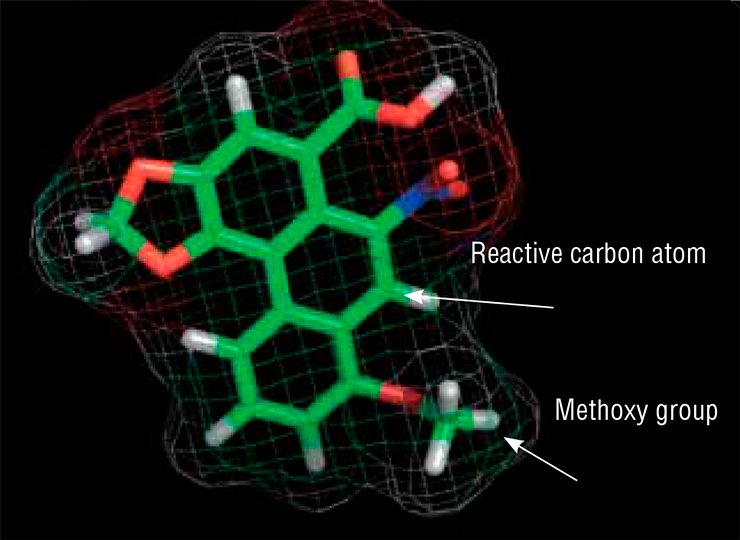 In traditional healing practices, birthwort is used to treat an incredible number of diseases. Russian folk medicine seems to be the only one on the whole Earth that has no utilizes for this plant, and even then, perhaps, because birthwort grows only in the southern parts of this country. There indications when birthwort may be used include diarrhea, abdominal pain, snake and scorpion bites, poisoning, interception, sexually transmitted diseases, central nervous system and cardiovascular diseases, fungal infections, malaria, helminths, eczemas, abscesses, and so on.
In traditional healing practices, birthwort is used to treat an incredible number of diseases. Russian folk medicine seems to be the only one on the whole Earth that has no utilizes for this plant, and even then, perhaps, because birthwort grows only in the southern parts of this country. There indications when birthwort may be used include diarrhea, abdominal pain, snake and scorpion bites, poisoning, interception, sexually transmitted diseases, central nervous system and cardiovascular diseases, fungal infections, malaria, helminths, eczemas, abscesses, and so on.
Sadly, all this advice is completely ungrounded from the point of view of evidence-based medicine. Suffice it to say that birthwort was used in Europe since the ancient times in child delivery only because of a distant shape resemblance between its flowers and the uterus!
All parts of this plant and all species of this genus contain appreciable amounts of aristolochic acids and their derivatives. After the nephrotoxic and carcinogenic effects of aristolochic acids were demonstrated in a laboratory rat model in 1982, the attempts to isolate any useful substances from this plant gradually ceased. Prescription of birthwort-containing herbal teas and medicines was prohibited in Europe; however, the Chinese medicine continued to keep to its traditions.
Crime scene investigation
Unknown offenders broke the door of a warehouse and stole
all fur items except for a cat, which, presumably, was not large
enough for a hat.
From a police report
A legitimate question arose after the discovery of birthwort’s nephropathic and carcinogenic properties: if Balkan nephropathy and Chinese herbal nephropathy are caused by the same agent, wherefrom on Earth did the Balkan population get these aristolochic acids? It goes without saying that the Danubian peasants did not take any traditional Chinese drugs. To find the answer, a team of toxicologists from the United States and Croatia led by Arthur Grollman and Bojan Jelakovic went to the banks of the Danube.
It emerged that as in most poor rural communities, the major component in the diet of the inhabitants in the areas endemic for the Balkan nephropathy was bread. Until recently, the peasants themselves harvested wheat and ground the grain in small local mills. Having examined the crops and questioned local people, researchers confirmed that birthwort, common for these areas, grew on the fields as a weed, and its seeds were milled together with the grain. By an unfortunate coincidence, birthwort seeds are very similar to the wheat grain in their size and weight, so threshing and winnowing wheat before milling cannot separate them. Having eaten a daily loaf of bread, an average inhabitant of a village was exposed to a substantial dose of aristolochic acids. When the share of consumed local foodstuff decreased in the late 20th century, the disease became much rarer.
These observations gave food for thought, but they were insufficient for proving the role of aristolochic acids in the development of Balkan nephropathy. Searching foodstuffs for the toxin was impossible since bread baked from non-local flour did not have it, and you could not find flour produced half a century ago. This suggested researchers to try the tests for adducts, which was so successful in the case of Chinese herbal nephropathy. And there they were: the adducts between aristolochic acids and DNA were detectable in the tumor samples and normal renal cortex of the patients even several decades after they had eaten the home-baked bread.
In addition, the researchers conducted numerous experiments with laboratory animals and cell cultures to prove reliably the effects of birthwort toxins on the cell. These experiments have shown that aristolochic acid I is responsible for nephrotoxicity and both toxin species, that is, aristolochic acids I and II, for carcinogenicity. The kidneys are specifically affected because the renal tubules contain specialized transporter proteins for eliminating organic acids from the blood into urine and these proteins capture aristolochic acid molecules, which then interact with their targets in the renal epithelium.
Where was the watchman?
“Every girl has her interests in life!” she told him. “I’m the only
one who has to live like a night watchman in someone else’s
warehouse. Either do something with me, Papa,
or I shall kill myself off!”
Isaac Babel, Odessa Tales
One point remained completely puzzling in this story about aristolochic acid. It is known that adducts between xenobiotics and DNA are very rapidly eliminated from the genome by a specialized cellular mechanism, the nucleotide excision repair. This repair pathway acts on the bulky DNA lesions and comprises two branches, global genome repair and transcription-coupled repair.
In general, the global genome repair can correct DNA lesions at any site, while the transcription-coupled variant works only in the genes that serve as a template for RNA synthesis. In the global genome repair, the lesion is recognized by a specialized complex of sensor proteins and proteins that help to loosen the packed chromatin structure in a chromosome. These events are the signal for two other protein complexes, which contain two DNA helicases, enzymes able to unwind the DNA double helix, separating it in two individual strands. At the next stage, other specialized proteins cut away a DNA fragment with a lesion, and the enzymes called DNA polymerases synthesize the missing piece to restore the initial sequence.
The second repair pathway is simpler: RNA polymerase itself signals the damage by just stopping at the lesion during transcription. The stalled polymerase is pulled away from the hazard zone by specialized proteins, and the further events are the sameas above.
So, why these adducts of aristolochic acid were not removed from DNA by the repair system but remained there for decades? It has turned out that they completely escape the notice of global genome repair: the sensor proteins just do not “see” such adducts and, correspondingly, do not bind to the DNA carrying them. Perhaps, this is due to some structural features of this damaged DNA: it has been shown that a little “help” to the repair system—breaking hydrogen bonds around the aristolochic acid adduct—makes the lesion perfectly recognizable. As for the transcription-coupled repair, this system is able to recognize the DNA carrying aristolochic acid adducts but acts only when the transcribed DNA strand is damaged. That is why adducts in active genes are eliminated only from one strand and remain in the other, causing mutations.
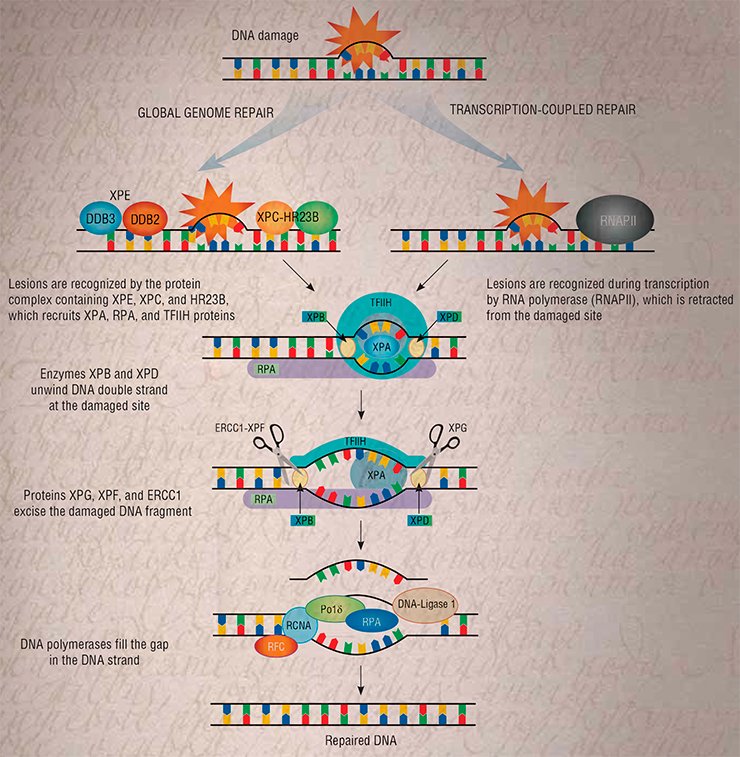 The detective toxicologists did an extraordinary feat as they determined the sequences of all genes in the tumors of several dozens of patients that suffered from Balkan endemic and Chinese herbal nephropathies. It was found that most of these mutations were formed when aristolochic acid was bound to the nucleobase adenine within the non-transcribed DNA strand. Many of these mutations were associated with the p53 gene, a major cell tumor suppressor, which is inactivated in approximately half of human cancers.
The detective toxicologists did an extraordinary feat as they determined the sequences of all genes in the tumors of several dozens of patients that suffered from Balkan endemic and Chinese herbal nephropathies. It was found that most of these mutations were formed when aristolochic acid was bound to the nucleobase adenine within the non-transcribed DNA strand. Many of these mutations were associated with the p53 gene, a major cell tumor suppressor, which is inactivated in approximately half of human cancers.
It is easy to imagine that a regular consumption of aristolochic acids in trace amounts, inducing “unrepairable” DNA damages, can lead to cancer development many years later.
Instead of an epilogue: Surgeon General warns again
The monitoring of pancake quality has demonstrated
that they are not poisonous. If you are afraid to disfigure your waist,
reduce your pancake intake. If you consume beyond-limit doses,
this will be a dangerous product.
Gennady G. Onishchenko, former Chief Sanitary Inspector and
currently advisor to the Chairman of the Government
of the Russian Federation
Finally, the criminal in the case of Balkan endemic nephropathy has been found and the guilt, in the language of court, is proven to “the absence of reasonable doubt.” What comes next? Why should a common Russian or American taxpayer, if not treated by a Chinese herbalist, care about a rare Balkan illness?
The answer to this question is quite simple. The mechanism underlying the toxicity of aristolochic acids, discovered by the American and Croatian medics, is surely not confined to these substances alone. Do you remember that a morning cup of coffee contains up to five hundred carcinogenic substances?
In 1964, Luther Terry, then the Surgeon General of the United States, issued his famous report Smoking and Health, which summed up many years of work of hundreds of physicians and scientists all over the world. Since that time, the Surgeon General keeps warning on cigarette packs that smoking causes lung cancer. It is hardly possible to count how many lives have been saved by this warning and what economic effect it has had. By the way, nitrosamines, the major carcinogens in tobacco, also form DNA adducts, eliminated by nucleotide excision repair. One can bet that research into aristolochic acids will also help to prevent the development of cancer in many people.
In Europe and the United States, any use of birthwort in folk medicine preparations is prohibited although you can easily buy them on the Internet. Grollman’s team is now working in Taiwan, where Chinese traditional medicine has strongly rooted and will not give up, especially in the rural areas with their shortage of physicians. That is why the rate of upper urogenital tract cancer there is the highest in the world.
The authors will believe their purpose accomplished if the readers realize that all biologically active substances from plants, however useful they are regarded in Chinese, Russian, or Bushman folk medicine, have evolved for the needs of the plants themselves and not for healing humans. Even when a substance can be a remedy for us, it will work better in its pure form and at a precisely measured dose. Do not brew and drink venerable cure-all herbal tea—better take a tablet born from painstaking evidence-based scientific research.
References
Bamias G., Boletis J. Balkan nephropathy: Evolution of our knowledge // Am. J. Kidney Dis. 2008. V. 52. No. 3. P. 606—616.
Clyne M. Aristolochic acid – one of the most potent carcinogens known to man // Nat. Rev. Urol. 2013. V. 10. No. 10. P. 552.
Grollman A. P. Aristolochic acid nephropathy: Harbinger of a global iatrogenic disease // Environ. Mol. Mutagen. 2013. V. 54. No. 1. P. 1–7.
Lee W., Ladanyi M. Genomics traces carcinogen fingerprints // Sci. Transl. Med. 2013. V. 5. No. 197. Article No. 197fs31.


